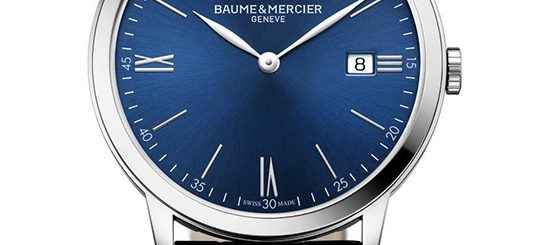Luxury Watch Spotlight: Mercier

Mercier was first established in 1830 by brothers Celestin and Louis Baume in the Swiss village of Les Bois, and like many watchmakers of the time, they initially focused on pocket watches. However, the company evolved rapidly and built a reputation for designing sophisticated models which utilize a variety of innovations. While most watchmakers focused exclusively on male clientele, Louis Baume recognized the importance of women’s watches and in 1869 gave his daughter a pocket watch made from gold.
Mercier’s Global Expansion
The success and recognition that the Baume brothers received in Switzerland encouraged them to expand internationally. As such, they established an office in London called “Baume Brothers” and would continue opening additional offices throughout the British Empire, in Africa, India, Burma, New Zealand and Singapore. By the latter part of the 19th century the Baume Brothers had become major players in the international watch market.
By the early 1920s the Baume family formed a partnership with Paul Mercier, and together they launched Baume and Mercier. The watchmaker increased its level of activity, particularly in the emerging field of wristwatches. The company was awarded the Poincon de Genève’, which is a hallmark symbolizing quality and outstanding craftsmanship.
Mercier Watch Design Characteristics
Early Mercier watches were prized for their chronographs and grand complexity. They also tended to feature tourbillons, minute repeaters and calendars. The instruments were exceptionally accurate and as result the company won multiple awards at global expeditions held in Zurich, Amsterdam, Paris, Chicago and London. Mercier watches are perfect for those looking for precision; they have been known to set records for accuracy, winning multiple competitions in time keeping. After introducing a new chronometer model in 1892 that won a time keeping competition the record would remain unbroken for a decade.
Later Mercier models increased in femininity and creativity. As stated previously, the company was one of the first to recognize the importance of the female market, giving them a head start on much of their competition at the time. By the Roaring Twenties, the company took advantage of women’s emancipation and launched the Marquis, which would become one of their most popular models. It was a combination of watch/jewelry which was embedded within a bracelet that incorporated a bangle style, and was an instant hit among female customers. Not only was it pleasing to the eye, it was practical to wear.
Bolstered by this success, Mercier continued to launched a variety of exquisitely designed women’s watches, and proved, more so than any other Swiss brand, that a female watch could be more than just a smaller and most simplistic version of a men’s model. Furthermore, the company played an important role in the Art Deco movement, and by the 1940s had begun introducing rectangular shaped watches, which were innovative at the time since the majority of watches then were circular. The watches during this period also tended to be urban, yet elegant.


